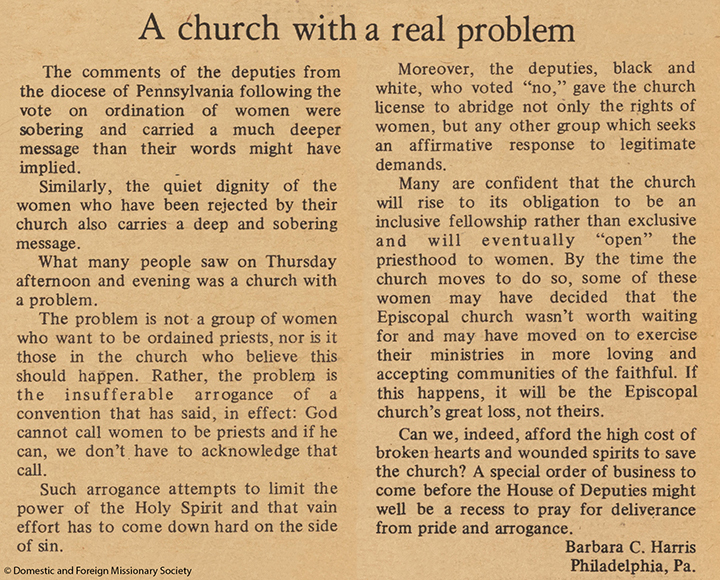The Lead-up
The debate over allowing women to take Holy Orders was started by the setting apart of the first deaconess in 1845, before any but the most progressive Episcopalians imagined women in the priesthood. Between 1855 and 1970, nearly 500 women were set apart as deaconesses and charged to act as ministers to the most needy portions of their communities, yet they were excluded from performing liturgical acts reserved for priests.
By the mid-20th century, deaconesses, who were excluded from the Church Pension Fund on the grounds that they were not clergy, had begun to object to the denial of their clerical standing. Many in the church supported their desire for full recognition alongside the male deacons, who were considered to be in clerical orders.
Phyllis Edwards was the first woman in The Episcopal Church accorded the title "reverend" in 1965 when Bishop James Pike, an early supporter of women's ordination, recognized her ministry as an "invested deaconess." Bishop Pike took this measure after the House of Bishops refused his attempt to ordain her a deacon. In spite of this opposition, women could attend Episcopal seminaries and they began to do so in great numbers, hoping that the day would soon come when their vocation as deacons, if not priests, would be recognized as equal to that of their male counterparts.

